Balkinization
an unanticipated consequence of
Jack M. Balkin
Balkinization Symposiums: A Continuing List
E-mail:
Jack Balkin:
jackbalkin at yahoo.com
Bruce Ackerman
bruce.ackerman at yale.edu
Ian Ayres
ian.ayres at yale.edu
Corey Brettschneider
corey_brettschneider at brown.edu
Mary Dudziak
mary.l.dudziak at emory.edu
Joey Fishkin
joey.fishkin at gmail.com
Heather Gerken heather.gerken at yale.edu
Abbe Gluck abbe.gluck at yale.edu
Mark Graber
mgraber at law.umaryland.edu
Stephen Griffin
sgriffin at tulane.edu
Jonathan Hafetz
jonathan.hafetz at shu.edu
Jeremy Kessler
jkessler at law.columbia.edu
Andrew Koppelman
akoppelman at law.northwestern.edu
Marty Lederman
msl46 at law.georgetown.edu
Sanford Levinson
slevinson at law.utexas.edu
David Luban
david.luban at gmail.com
Gerard Magliocca
gmaglioc at iupui.edu
Jason Mazzone
mazzonej at illinois.edu
Linda McClain
lmcclain at bu.edu
John Mikhail
mikhail at law.georgetown.edu
Frank Pasquale
pasquale.frank at gmail.com
Nate Persily
npersily at gmail.com
Michael Stokes Paulsen
michaelstokespaulsen at gmail.com
Deborah Pearlstein
dpearlst at yu.edu
Rick Pildes
rick.pildes at nyu.edu
David Pozen
dpozen at law.columbia.edu
Richard Primus
raprimus at umich.edu
K. Sabeel Rahmansabeel.rahman at brooklaw.edu
Alice Ristroph
alice.ristroph at shu.edu
Neil Siegel
siegel at law.duke.edu
David Super
david.super at law.georgetown.edu
Brian Tamanaha
btamanaha at wulaw.wustl.edu
Nelson Tebbe
nelson.tebbe at brooklaw.edu
Mark Tushnet
mtushnet at law.harvard.edu
Adam Winkler
winkler at ucla.edu
Compendium of posts on Hobby Lobby and related cases
The Anti-Torture Memos: Balkinization Posts on Torture, Interrogation, Detention, War Powers, and OLC
The Anti-Torture Memos (arranged by topic)
Recent Posts
The Subtle Vices of the Virtue of Symmetry
Just A Few Blogs
ACS Blog
Alas, a Blog
Althouse
Arts and Letters Daily
Atrios (Eschaton)
Bill of Health
Buzzflash.com
Buzz Machine
Cato at Liberty
Juan Cole (Informed Comment)
Concurring Opinions
The Constitution in 2020
Corrente
Crooked Timber
Daily Howler
Daily Kos
Dana Boyd
Brad DeLong
Digby (Hullabaloo)
Discriminations
Daniel Drezner
Kevin Drum (Mother Jones)
Electrolite
En Banc
Eunomia (Daniel Larison)
Fafblog
Michael Froomkin (Discourse.net)
GovLab (Beth Noveck)
Rick Hasen (Election Law)
History News Network
How Appealing
Ignatz (Sam Heldman)
The Importance of (Ernie Miller)
Infolaw
Instapundit
International Economic Law and Policy Blog
IntLawGrrls
Jacob Levy
Jesus' General
Jurisdynamics
The Kitchen Cabinet
Mark Kleiman
Law Blog Central
Larry Lessig
Lawyers, Guns and Money
Liberal Oasis
Brian Leiter's Law School Reports
The Leiter Reports
Marginal Revolution
Megan McArdle
Memeorandum
Metafilter
Mirror of Justice
The New Republic
Newseum
No More Mister Nice Blog
Brendan Nyhan
Opinio Juris
Orcinus
The Originalism Blog
Pandagon
Passport (Foreign Policy)
Overcoming Bias
Political Animal (Washington Monthly)
Political Theory Daily Review
Political Wire (Taegan Goddard)
The Poor Man
Virginia Postrel
Prawfsblawg
Public Reason
Jonathan Rauch
Raw Story
Redstate
ReligiousLeftLaw.com
Reporters Committee For Freedom of the Press
Reproductive Rights Blog
Rothman's Roadmap to the Right of Publicity
SCOTUS Blog
Seeing the Forest
Clay Shirky
The Shifted Librarian
The Situationist
Larry Solum (Legal Theory)
Andrew Sullivan
Talking Points Memo
Talk Left
Tapped
Tbogg
TechPresident
The Paper Chase (Jurist)
Tom Paine
Tom Tomorrow (This Modern World)
Eve Tushnet
Uggabugga
University of Chicago Law School Faculty Blog
Unqualified Offerings
The Volokh Conspiracy
War and Piece (Laura Rozen)
Wampum
Oliver Willis
Wonkette
Written Description
Matthew Yglesias
Yin
Your Choice of Feeds
1. XML
powered by
2. Atom Feed
3. RSS 2.0
The Subtle Vices of the Virtue of Symmetry
Guest Blogger
For the Balkinization symposium on Zachary Price, Constitutional Symmetry: Judging in a Divided Republic (Cambridge University Press, 2024). William D. Araiza Zachary Price has written a
big and important book. It’s big in both the sweep of its coverage and its
aspirations. Addressing a wide variety of constitutional and public law
subject-areas, it aspires to provide a new criterion for judicial
decision-making that he argues will do nothing less than mitigate the legitimacy
crisis facing the Supreme Court. (To his great credit, he does not overclaim by
arguing that his solution will completely solve that crisis. His modesty in
that and other regards is one of the book’s many virtues.) And while his
analysis is sophisticated, careful, and thorough, his main thesis is
disarmingly straightforward: the Supreme Court, he argues, should consider and,
to the extent possible, accord at least some weight to whether its analysis of
a given issue will equally—“symmetrically”—impact both sides of today’s
partisan divides. This is an important idea that deserves to be considered.
Nevertheless, despite these undeniable virtues, some subtle vices, or at least
unresolved ambiguities, lurk within it. First, the level at which Professor Price casts his call for
symmetrical constitutional interpretation remains unclear. This ambiguity
remains despite his recognition of the issue, and, indeed, despite his explicit
statement that “Symmetric interpretation … most appropriately applies in the
mid-range, at the level of general understandings and doctrines that implement
constitutional guarantees across a defined set of cases.” (102) He uses the Free
Speech Clause’s content-neutrality rule as an exemplar of such a mid-range
understanding—one cast at a more general level than particular results giving
some speakers wins and others losses, but not as general as the selection of a
particular interpretive theory, such as originalism, to decide such cases. But questions remain. First, the examples Professor Price
himself offers raise questions about this mid-range understanding of his desired
symmetry. Thus, in discussing Obergefell
v. Hodges, he suggests that a symmetrical ruling in that case would
have “guarantee[d] official neutrality on questions of marriage and sexuality …
stripp[ing] the state simultaneously of authority to forbid same-sex marriage
and to compel participation in it.” (109) But that would be quite a broad rule,
transcending the substantive due process doctrine on which Obergefell
formally rested, to incorporate rights best thought of as resting instead on
free speech, free religious exercise, and associational liberty. To be sure,
such a rule could be described as symmetrical—but still, not one grounded “at
the level of … doctrines that implement constitutional guarantees.” Moreover,
such a rule—in this case, enshrining, among other things, seemingly broad
religious liberty-based rights to exemptions from public accommodations
laws—would likely cause asymmetries of its own, to the extent Professor Price
argues (as he does) that free religious exercise claims are themselves likely asymmetric.
(132-135) With analysis like this, one fears that his level of generality
analysis would quickly collapse into a set of contradictory impulses, depending
on how one viewed the particular claim at issue. More generally, it remains unclear why Professor Price
favors that mid-range level for his call for symmetry, rather than more
specific or more general levels. Critiquing the more specific level, he seems
to believe that simply handing out specific wins and losses equally to both
sides, like an adult on Halloween giving a pair of trick-or-treaters exactly the
same number of candies, will impair the Court’s long-run legitimacy. Perhaps.
But that conclusion turns on the particular audience that is the subject of his
legitimacy concern. Average citizens don’t read Supreme Court opinions; even
less do they scour them for evidence of principled (or symmetric) legal
analysis. If Professor Price’s concern about the Court’s declining legitimacy is
aimed at the mass of American citizens, it’s not clear why equal pieces of
candy for each side, writ large, is a strategy doomed to failure. Careful
readers and critics of the Court’s handiwork wouldn’t like it. But is that who
he is concerned about? At the other extreme, Professor Price suggests that the
justices’ selection of overarching interpretive theories is also not the best
level at which his recommended symmetry be implemented. He argues—oddly to
me—that, for example, what he describes as Justice Gorsuch’s originalism “seem[s]
unlikely to stabilize [constitutional] understandings” (106) even if, as he
explains, that justice’s version of originalism provides victories to both
sides. To be sure, he’s certainly correct that the justices on the current
Court are simply unable to unite around a given interpretive theory. That’s a
perfectly defensible reason to cast his gaze downward, toward his preferred
“mid-range.” But why such a theory is
incapable, as a general matter, of presenting an appropriately symmetrical
constitutional jurisprudence remains under-explained, especially in light of recent
progressive interest in the potential of at least some applications of
originalism. This gap in the analysis becomes more than a pesky nit when
one considers certain interpretive approaches that seem ready-made for
Professor Price’s symmetry prescription. In particular, political process
theory, or democratic reinforcement more generally, stands as a seemingly
symmetrical approach to constitutional decision-making. Indeed, its Ur-text,
Footnote 4 of United
States v. Carolene Products, has
been understood as an attempt to find a role for the Court while staying
neutral on broad policy debates—essentially what symmetry entails. Concededly,
as Professor Price himself notes in his last chapter on voting and the law of
democracy, focusing on democratic reinforcement requires a theory of democracy—something
that, as scholars have pointed out, the Court has never provided, even while
hurling down thunderbolts such as Reynolds
v. Sims. Nevertheless, if one is looking for a jurisprudential approach
that promises symmetry by promising an equal playing field for all political
combatants, then the Court could do worse than simply delivering on whatever
(reasonably-justified) version of that equal field it can. One wonders if his
counsel of looking for symmetry at more specific, “mid-range” levels is simply
too modest. Indeed, Professor Price embraces the underlying wisdom of a
political process approach to constitutional law, but purports to “updat[e]” it
(63), by characterizing “the central political-process challenge in the United
States today” not as Footnote 4-style political exclusion, but instead as “partisanship
itself.” (Id.) This is a bold and big claim, and Professor Price can be
forgiven for not fully making that case in his book. But if one is ultimately
going to embrace his call for symmetry as a modern-day version of the mid-late
20th century Court’s political process reinforcement, additional
work must be done. But even on its own terms, Professor Price’s mid-range
symmetry raises difficult questions. Consider again Obergefell. Professor
Price critiques Obergefell as “reach[ing] a controversial and socially
transformative result on grounds with no evident application beyond the
immediate case at hand.” (109) I believe he is being too uncharitable to his
former boss. Justice Kennedy began his opinion in Obergefell by telling
the stories of the plaintiffs in the case. To be sure, one goal of telling those
stories was likely to paint those persons as, to use my colleague Cynthia
Godsoe’s words, “perfect
plaintiffs” whose stories would resonate with lay readers of the opinion.
But those stories establish an important larger principle: that the plaintiffs
in that case (like, in Justice Kennedy’s implied telling, all same-sex couples)
sought to wed for the same reasons opposite-sex couples did. In that sense, one
can find a broader grounding for Obergefell, one located, tellingly
enough, in the space where he famously explained that the fundamental right to
state recognition of a special type of intimate human relationship and concern
about invidious discrimination converged. Why wouldn’t that be a principle be
capable of symmetrical application? Of course, that question probably answers itself: “because,
leaving aside far-fetched hypotheticals (California banning marriages that emphasize
traditional gender roles?), there simply is no conservative analog to same-sex
marriage that Obergefell can equally promote.” That answer raises what
might be the fundamental problem with Professor Price’s argument. It may be
that, at the end of the day, the only candidates for his mid-range symmetry are
those doctrinal areas that feature potential rules that could benefit both
sides. To his great credit, Professor Price recognizes this possibility, when
he explains, especially in the context of gun and unenumerated substantive due
process rights (and maybe religious exercise rights as well), that symmetry is
simply not possible, or at least more difficult, given the deep political
valence of the underlying right. It's not clear that Professor Price provides a satisfactory
explanation of what a court—or the Court—should do about those situations. At
times, he seems to suggest that the Court should simply decide those cases on
other grounds. For example, when discussing religious exercise rights, he calls
for deciding those claims as more symmetry-amenable claims to free association.
Again, this argument is puzzling. Litigants raise the arguments they want to
raise—indeed, quite possibly for larger political reasons. Today, for example,
not only individual plaintiffs but the ideological litigation organizations
that often represent them presumably are aggressive about pressing free exercise
rights, given their sense that a majority of the Court is sympathetic to them. What is a Court to do when those cases reach the Court?
Simply ignore the legal theory being pressed on them? Perhaps that might, over
time, persuade those forces to shift their emphasis to, say, the First
Amendment associational right, but surely that would come at the price of the
Court seeming to ignore, or even disparage, the right that, inconveniently or
even embarrassingly,
exists in the constitutional text. Even if the Supreme Court could force that
shift by exercising the passive virtue of simply denying cert. in these
cases, lower courts would have to decide them. Such cert. denials would
presumably lead to lower court jurisprudence asymmetrically favoring or
disfavoring such claims, or simply to conflicting lower court decisions that
would leave everyone crying out for Supreme Court intervention. But leave aside
these logistics—if logistics they are. More generally, calling for the Court to
repackage litigants’ claims in different doctrinal boxes is a formula for
willful and ultimately confused constitutional decision-making, especially if
it was done simply in order to ensure that both sides get a candy from the
resulting doctrine. In sum, then, while Professor Price’s work is deeply
valuable, it cannot be the last word, not just on how the Court should rule on
or analyze cases (he concedes that much), but also on the viability of symmetry
as a general matter. Despite that conclusion, the fact remains that Professor
Price has done a great service in raising the symmetry idea as one that might
reasonably motivate a Court seeking to make a good-faith attempt to remedy the
legitimacy deficit it has, sadly, largely created for itself. William D.
Araiza is the Stanley A. August Professor of Law at Brooklyn Law School. You can reach him by e-mail at bill.araiza@brooklaw.edu.
Posted
9:30 AM
by Guest Blogger [link]
Books by Balkinization Bloggers

Gerard N. Magliocca, The Actual Art of Governing: Justice Robert H. Jackson's Concurring Opinion in the Steel Seizure Case (Oxford University Press, 2025)

Linda C. McClain and Aziza Ahmed, The Routledge Companion to Gender and COVID-19 (Routledge, 2024)

David Pozen, The Constitution of the War on Drugs (Oxford University Press, 2024)

Jack M. Balkin, Memory and Authority: The Uses of History in Constitutional Interpretation (Yale University Press, 2024)
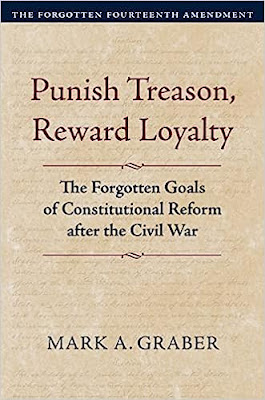
Mark A. Graber, Punish Treason, Reward Loyalty: The Forgotten Goals of Constitutional Reform after the Civil War (University of Kansas Press, 2023)
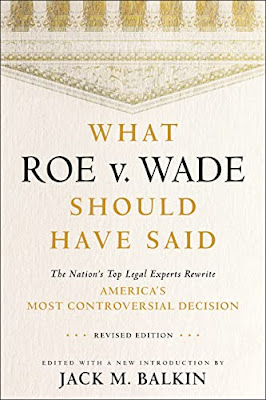
Jack M. Balkin, What Roe v. Wade Should Have Said: The Nation's Top Legal Experts Rewrite America's Most Controversial Decision - Revised Edition (NYU Press, 2023)

Andrew Koppelman, Burning Down the House: How Libertarian Philosophy Was Corrupted by Delusion and Greed (St. Martin’s Press, 2022)

Gerard N. Magliocca, Washington's Heir: The Life of Justice Bushrod Washington (Oxford University Press, 2022)
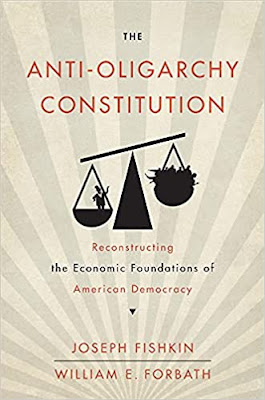
Joseph Fishkin and William E. Forbath, The Anti-Oligarchy Constitution: Reconstructing the Economic Foundations of American Democracy (Harvard University Press, 2022)
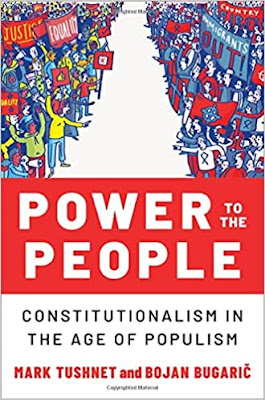
Mark Tushnet and Bojan Bugaric, Power to the People: Constitutionalism in the Age of Populism (Oxford University Press 2021).

Mark Philip Bradley and Mary L. Dudziak, eds., Making the Forever War: Marilyn B. Young on the Culture and Politics of American Militarism Culture and Politics in the Cold War and Beyond (University of Massachusetts Press, 2021).

Jack M. Balkin, What Obergefell v. Hodges Should Have Said: The Nation's Top Legal Experts Rewrite America's Same-Sex Marriage Decision (Yale University Press, 2020)

Frank Pasquale, New Laws of Robotics: Defending Human Expertise in the Age of AI (Belknap Press, 2020)

Jack M. Balkin, The Cycles of Constitutional Time (Oxford University Press, 2020)

Mark Tushnet, Taking Back the Constitution: Activist Judges and the Next Age of American Law (Yale University Press 2020).

Andrew Koppelman, Gay Rights vs. Religious Liberty?: The Unnecessary Conflict (Oxford University Press, 2020)

Ezekiel J Emanuel and Abbe R. Gluck, The Trillion Dollar Revolution: How the Affordable Care Act Transformed Politics, Law, and Health Care in America (PublicAffairs, 2020)

Linda C. McClain, Who's the Bigot?: Learning from Conflicts over Marriage and Civil Rights Law (Oxford University Press, 2020)
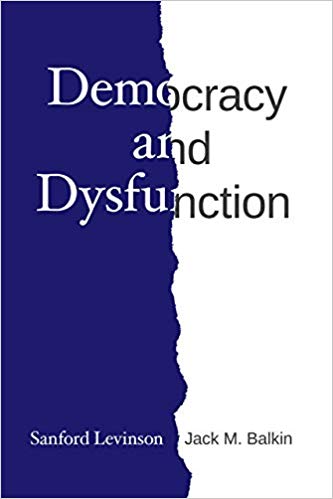
Sanford Levinson and Jack M. Balkin, Democracy and Dysfunction (University of Chicago Press, 2019)

Sanford Levinson, Written in Stone: Public Monuments in Changing Societies (Duke University Press 2018)

Mark A. Graber, Sanford Levinson, and Mark Tushnet, eds., Constitutional Democracy in Crisis? (Oxford University Press 2018)

Gerard Magliocca, The Heart of the Constitution: How the Bill of Rights became the Bill of Rights (Oxford University Press, 2018)

Cynthia Levinson and Sanford Levinson, Fault Lines in the Constitution: The Framers, Their Fights, and the Flaws that Affect Us Today (Peachtree Publishers, 2017)

Brian Z. Tamanaha, A Realistic Theory of Law (Cambridge University Press 2017)

Sanford Levinson, Nullification and Secession in Modern Constitutional Thought (University Press of Kansas 2016)

Sanford Levinson, An Argument Open to All: Reading The Federalist in the 21st Century (Yale University Press 2015)

Stephen M. Griffin, Broken Trust: Dysfunctional Government and Constitutional Reform (University Press of Kansas, 2015)

Frank Pasquale, The Black Box Society: The Secret Algorithms That Control Money and Information (Harvard University Press, 2015)

Bruce Ackerman, We the People, Volume 3: The Civil Rights Revolution (Harvard University Press, 2014)
Balkinization Symposium on We the People, Volume 3: The Civil Rights Revolution

Joseph Fishkin, Bottlenecks: A New Theory of Equal Opportunity (Oxford University Press, 2014)

Mark A. Graber, A New Introduction to American Constitutionalism (Oxford University Press, 2013)

John Mikhail, Elements of Moral Cognition: Rawls' Linguistic Analogy and the Cognitive Science of Moral and Legal Judgment (Cambridge University Press, 2013)

Gerard N. Magliocca, American Founding Son: John Bingham and the Invention of the Fourteenth Amendment (New York University Press, 2013)

Stephen M. Griffin, Long Wars and the Constitution (Harvard University Press, 2013)

Andrew Koppelman, The Tough Luck Constitution and the Assault on Health Care Reform (Oxford University Press, 2013)

James E. Fleming and Linda C. McClain, Ordered Liberty: Rights, Responsibilities, and Virtues (Harvard University Press, 2013)
Balkinization Symposium on Ordered Liberty: Rights, Responsibilities, and Virtues

Andrew Koppelman, Defending American Religious Neutrality (Harvard University Press, 2013)

Brian Z. Tamanaha, Failing Law Schools (University of Chicago Press, 2012)

Sanford Levinson, Framed: America's 51 Constitutions and the Crisis of Governance (Oxford University Press, 2012)

Linda C. McClain and Joanna L. Grossman, Gender Equality: Dimensions of Women's Equal Citizenship (Cambridge University Press, 2012)

Mary Dudziak, War Time: An Idea, Its History, Its Consequences (Oxford University Press, 2012)

Jack M. Balkin, Living Originalism (Harvard University Press, 2011)

Jason Mazzone, Copyfraud and Other Abuses of Intellectual Property Law (Stanford University Press, 2011)

Richard W. Garnett and Andrew Koppelman, First Amendment Stories, (Foundation Press 2011)

Jack M. Balkin, Constitutional Redemption: Political Faith in an Unjust World (Harvard University Press, 2011)

Gerard Magliocca, The Tragedy of William Jennings Bryan: Constitutional Law and the Politics of Backlash (Yale University Press, 2011)

Bernard Harcourt, The Illusion of Free Markets: Punishment and the Myth of Natural Order (Harvard University Press, 2010)

Bruce Ackerman, The Decline and Fall of the American Republic (Harvard University Press, 2010)
Balkinization Symposium on The Decline and Fall of the American Republic

Ian Ayres. Carrots and Sticks: Unlock the Power of Incentives to Get Things Done (Bantam Books, 2010)

Mark Tushnet, Why the Constitution Matters (Yale University Press 2010)
Ian Ayres and Barry Nalebuff: Lifecycle Investing: A New, Safe, and Audacious Way to Improve the Performance of Your Retirement Portfolio (Basic Books, 2010)
.jpg)
Jack M. Balkin, The Laws of Change: I Ching and the Philosophy of Life (2d Edition, Sybil Creek Press 2009)

Brian Z. Tamanaha, Beyond the Formalist-Realist Divide: The Role of Politics in Judging (Princeton University Press 2009)
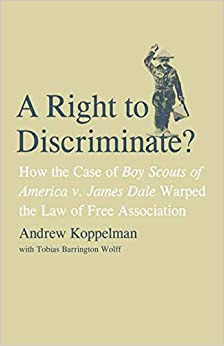
Andrew Koppelman and Tobias Barrington Wolff, A Right to Discriminate?: How the Case of Boy Scouts of America v. James Dale Warped the Law of Free Association (Yale University Press 2009)

Jack M. Balkin and Reva B. Siegel, The Constitution in 2020 (Oxford University Press 2009)
Heather K. Gerken, The Democracy Index: Why Our Election System Is Failing and How to Fix It (Princeton University Press 2009)

Mary Dudziak, Exporting American Dreams: Thurgood Marshall's African Journey (Oxford University Press 2008)

David Luban, Legal Ethics and Human Dignity (Cambridge Univ. Press 2007)

Ian Ayres, Super Crunchers: Why Thinking-By-Numbers is the New Way to be Smart (Bantam 2007)

Jack M. Balkin, James Grimmelmann, Eddan Katz, Nimrod Kozlovski, Shlomit Wagman and Tal Zarsky, eds., Cybercrime: Digital Cops in a Networked Environment (N.Y.U. Press 2007)

Jack M. Balkin and Beth Simone Noveck, The State of Play: Law, Games, and Virtual Worlds (N.Y.U. Press 2006)

Andrew Koppelman, Same Sex, Different States: When Same-Sex Marriages Cross State Lines (Yale University Press 2006)
Brian Tamanaha, Law as a Means to an End (Cambridge University Press 2006)
Sanford Levinson, Our Undemocratic Constitution (Oxford University Press 2006)
Mark Graber, Dred Scott and the Problem of Constitutional Evil (Cambridge University Press 2006)
Jack M. Balkin, ed., What Roe v. Wade Should Have Said (N.Y.U. Press 2005)
Sanford Levinson, ed., Torture: A Collection (Oxford University Press 2004)
Balkin.com homepage
Bibliography
Conlaw.net
Cultural Software
Writings
Opeds
The Information Society Project
BrownvBoard.com
Useful Links
Syllabi and Exams